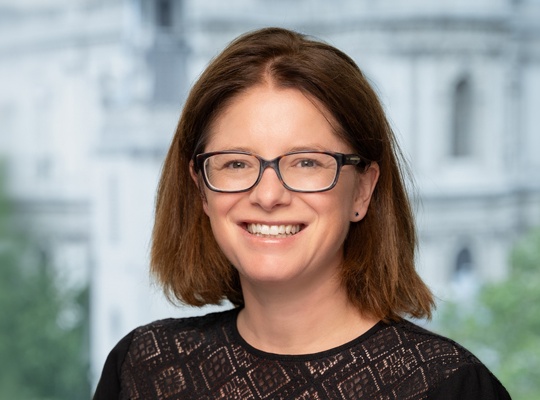LIBOR – Where Are We Now?
Discussion of LIBOR was catapulted back into the spotlight last summer when Andrew Bailey, Chief Executive of the UK’s Financial Conduct Authority (FCA), gave a speech1 on the reference rate’s future. The key take-away was that, post-2021, the FCA would not compel contributor banks to voluntarily sustain LIBOR. The speech effectively set a 2021 deadline for action, which did not necessarily sound the end of LIBOR but indicated a date by which reform must be made – either to the rate itself or by the creation of an alternative reference rate (or alternative “risk-free” rate, so-called RFR). The speech made clear that, in the absence of actual transactions to form the basis of LIBOR quotations, the benchmark was not sustainable in its current form. As the value of outstanding derivatives, loans and mortgages exposed to LIBOR and the family of other inter-bank offered rates (IBORs) amounts to hundreds of trillions of dollars, the consequences of this development are wide-ranging. Market participants will need to formulate a plan for: (1) existing contracts that reference LIBOR and will survive the deadline (so-called “legacy contracts”); and (2) new contracts entered into that would usually reference LIBOR and whose term extends beyond the date of such reform or discontinuation.
Current Status
Following Mr. Bailey’s speech, industry groups focused on putting together a plan to find a solution both for LIBOR and the other IBORs. In November 2017, some short-term uncertainty was settled when the FCA issued a statement confirming that all 20 panel banks that submit contributions for LIBOR would continue to support the rate until 2021. On 1 February 2018, five key industry groups (Trade Associations) launched a roadmap2 that brings together various work streams with the aim of identifying how a transition from the IBORs to alternative RFRs will work.
The FCA has also stressed the need to identify the replacement rates and the treatment of legacy contracts3. Market work in this area is active, and March 2018 saw the publication of: an ISDA IBOR Alternative Reference Rates Disclosure document; the minutes of the first European Central Bank working group on euro risk-free rates (Euro Risk-Free Rates Working Group); an FCA Policy Statement regarding LIBOR contributions4; and a joint Loan Market Association (LMA) and Association of Corporate Treasurers (ACT) paper providing a helpful overview of the topic5.
In conjunction with their roadmap publication, the Trade Associations are undertaking a global survey of both buy-side and sell-side firms to provide data for a further report addressing the transition.
Getting Engaged
At this stage, it is too early to say what a global solution will look like and what the differences, if any, may be between legacy and new contracts. Existing contracts that reference LIBOR and terminate before the end of 2021 should be insulated from any disruption. Contracts that reference LIBOR and extend beyond that date should be assessed with a view to: the contract’s dependence on the LIBOR/IBOR reference rates; the existence of any fall-back position; the long-term viability of any such fall-back; and the documentation (and process) required to effect any changes identified.
ISDA Position
Derivatives exposure to LIBOR changes will require consideration on a case-by-case basis and a review of the relevant documentation. Generally speaking, for those derivatives transactions that are subject to the 2006 ISDA Definitions, a fall-back position is provided should a LIBOR/IBOR rate no longer appear at the initially specified source. This fall-back essentially looks to prescribed banks for rates that provide an alternative benchmark rate. However, these arrangements were never intended as a permanent solution.
Work is underway at ISDA to update the 2006 ISDA Definitions for a new fall-back position and to address any related changes and processes that may be required. It is expected that the ISDA protocol process will again be used to ease the process, by allowing parties to amend contracts across counterparties by a single adherence. In November 2017, ISDA produced a useful FAQ statement on the development of fall-backs for LIBOR and other key IBORs, which has triggered discussion regarding how to deal with legacy contracts. One suggestion has been to use a LIBOR proxy that would be available on the same screen as LIBOR, in an effort to avoid document amendments. Conceding that there will be cases where it is not practical or economical to change reference rates, the FCA has acknowledged the possibility of using a LIBOR proxy as a benchmark in legacy contracts.
LIBOR, the IBORs and the European Benchmarks Regulation (BMR)
There is also the question of how the wider LIBOR debate interacts with the BMR.
The BMR, which is largely the legislative response to recent benchmark manipulation scandals, took general effect on 3 January 2018 (with various transitional provisions regarding the use of existing benchmarks)6. The BMR’s key aim is to regulate providers of, and contributors to, benchmarks. The BMR obligations will have limited impact on the buy-side, with prescribed supervised entities that “use” a benchmark required to have robust written plans in place regarding their use of benchmarks (including information on alternative benchmarks). Relevant users should therefore now identify their plan for alternative benchmarks to LIBOR/other IBORs.
The BMR also has a key role in the LIBOR/IBOR discussion and timeline. Since December 2017, LIBOR has joined EURIBOR (Euro Interbank Offered Rate) and EONIA (Euro OverNight Index Average) as a “critical benchmark” for the purposes of the BMR, thus subjecting LIBOR to specific additional rules (including the power to compel contributors to provide input data). The relevant FCA Policy Statement regarding this “power to compel” notes the FCA’s hope that, given current efforts to transition to alternative benchmarks, there will not be a need to compel such contributions. More significantly, the BMR rules on the administration of benchmarks provide that the administrators of critical benchmarks may apply for BMR authorisation until 1 January 2020. If authorisation is not obtained by the relevant administrators7 by such date – and assuming no extension of the transitional period – the benchmarks cannot be used for new contracts, thus serving to add pressure to the “reform and/or replace” debate.
Work on All Fronts
The issue of transition to a new series of benchmarks is, of course, not limited to the UK and the rest of Europe, but is part of a global effort to identify replacement benchmarks. In the United States, the Alternative Reference Rates Committee is working on a replacement for USD LIBOR; in Switzerland, the National Working Group on Swiss Franc Reference Rates is looking for a successor to CHF LIBOR; and in Japan, the Japanese Study Group on Risk-Free Reference Rates is looking beyond JPY LIBOR. To date, the alternative benchmarks selected by these groups are: SOFR (Secured Overnight Financing Rate) for U.S. dollars; SARON (Swiss Average Rate Overnight) for Swiss francs; and the uncollateralised overnight call rate (so-called Tokyo Overnight Average Rate, or TONA) for yen. In the UK, the Bank of England Working Group on Sterling Risk-Free Reference Rates has identified the reformed SONIA (Sterling Overnight Index Average) in respect of sterling, and from 23 April 2018, the Bank of England will take over the administration of SONIA using a reformed methodology8.
With developments continuing apace, now is the time to start checking use of these benchmarks and to plan for managing the transition.
Footnotes
1) The Future of LIBOR, speech by Andrew Bailey, Chief Executive of the FCA, 27 July 2017.
2) The IBOR Global Benchmark Survey 2018 Transition Roadmap was published by the International Swaps and Derivatives Association (ISDA), the Association of Financial Markets in Europe (AFME), the International Capital Market Association (ICMA), Securities Industry and Financial Markets Association (SIFMA) and its asset management group (SIFMA AMG).
3) See Recent developments in financial markets, speech by Andrew Bailey, Chief Executive of the FCA, March 2018.
4) FCA Policy Statement 18/5, Powers in relation to LIBOR contributions, March 2018.
5) LMA, ACT, The future of LIBOR: what you need to know, March 2018.
6) The next key implementation date will be 1 January 2020.
7) EMMI (the European Money Markets Institute) is the administrator for EURIBOR and EONIA, and ICE Benchmark Ltd is the administrator for LIBOR.
8) See ISDA, Frequently Asked Questions: SONIA reform, 28 March 2018. A related amendment to the 2006 ISDA Definitions also will be published, effective 23 April 2018 (a pre-publication draft was also made available on 28 March 2018).





